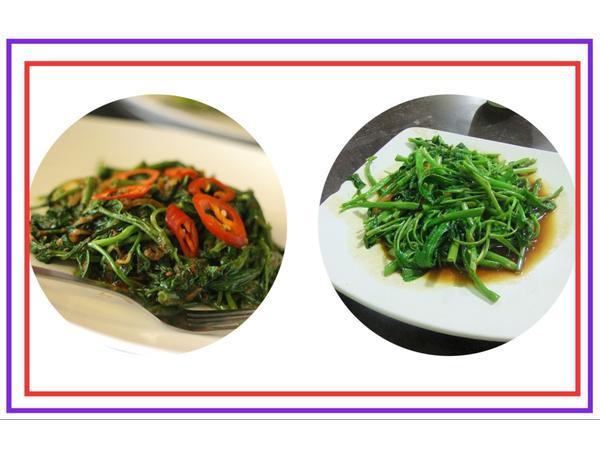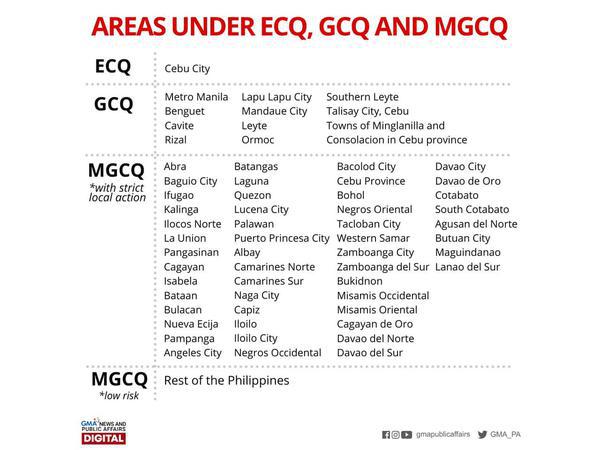Pinoy Recipes: Adobong Kangkong (Apan-apan)

Check out your social media pages. What have your friends on quarantine been up to? Cooking! Yes, many of us are testing our culinary skills while on community quarantine.
It is definitely safer to prepare your own meals just to be safe. So we once again revisit our old favorite: Filipino recipes. Our first recipe: Adobong Kangkong!
More of this series: Pinoy Recipes
Show All- Pinoy Recipes: The Ultimate Filipino Pork Adobo
- Pinoy Recipes: Minced Meat a.k.a Ginaling
- Pinoy Recipes: Inun-unan na Isda (Bisaya ni 'Bay)
- Pinoy Recipes: Utan Bisaya (Local Vegetable Soup)
- Pinoy Recipes: Pastillas de Leche
- Pinoy Recipes: Leche Flan or Crème Caramel
- Pinoy Recipes: Maja Blanca (Rice Cakes)
- Pinoy Recipes: Biko (Glutinous Rice Cake)
- Pinoy Recipes: Champorado (And Yet Another Rice Dish!)
- Pinoy Recipes: Turon (Caramelized Banana)
- Pinoy Recipes: Scrambled Eggs with Chopped Prawns
- Pinoy Recipes: How to Make Garlic Fried Rice
- Pinoy Recipes: How to Make Pinakbet
- Pinoy Recipes: How to Make Your Own Banana Bread
- Pinoy Recipes: Adobong Kangkong (Apan-apan)
- Pinoy Recipes: Ginisang Monggo
- Pinoy Recipes: Tortang Talong (Eggplant Omelet)
- Pinoy Recipes: Pancit Bihon Guisado
- Pinoy Recipes: Tinolang Manok
In the Philippines, it is very common to cook Kangkong in the “adobo” way. Kangkong (Ipomoea aquatica) is also known as water spinach, swamp cabbage, river spinach, and Chinese watercress.
*Adobo = prepared by using a paste or marinade made from chilies, vinegar, herbs, and spices, used in Mexican cooking to flavour meat or fish.
Adobong Kangkong can be cooked with pork meat or with soy sauce. It's easy to prepare and you can serve it within 10-15 minutes!
Ingredients
- 2 tbsp. oil
- 4 cloves of garlic, well-minced
- 1 onion (optional)
- 100g pork, cut into cubes or small lengths
- 2 tsp. soy sauce
- 2 tsp. vinegar
- water
- pepper, salt (seasoning)
- 2 bundles of Kangkong (cut into 2 inches long)
Preparation
- Heat oil in a pan. Sauté garlic and onion.
- Add the pork. Stir-fry until it turns brown.
- Add water. Let it boil to soften the pork.
- Add soy sauce, vinegar, pepper, and salt.
- Add Kangkong. Cool until the leaves are totally wilted.
- Adjust seasoning, according to your taste.
- Remove from heat then serve.
Violá! You're done! Most Filipinos love the slippery texture, tender leaves, and crunchy stems when cooked. Aside from this dish, you can also try the Binagoongang Kangkong and Ensaladang Kangkong. You might as well try to add the leaves in Vegetable soup, Sinigang, or Monggo (mung bean) Soup.
Kangkong is Healthy
Kangkong is a healthy vegetable. It is high in beta-carotene, carbohydrates, dietary fibers, iron, and natural antioxidants.
It is usually seen in damp areas whether it is clean or dirty. The stem grows 2-3 meters (7-10ft.). Proper preparation, such as washing, boiling and frying is advisable to prevent health risks.
It can also be fed on livestock such as pigs, chickens, ducks, fish, and cattle because of having high carotene which serves as green fodder. It has also been proven to be an effective method for wastewater treatment called Phytoremediation.
In Southeast Asia and Africa, it is traditionally used as medicine in nosebleeds, anthelmintic (antiparasitic), and against piles (hemorrhoids).
Source:
- scinet.dost.gov.ph
- commons.wikimedia.org
- filipinorecipesite.com
More of this series: Pinoy Recipes
Show All- Pinoy Recipes: The Ultimate Filipino Pork Adobo
- Pinoy Recipes: Minced Meat a.k.a Ginaling
- Pinoy Recipes: Inun-unan na Isda (Bisaya ni 'Bay)
- Pinoy Recipes: Utan Bisaya (Local Vegetable Soup)
- Pinoy Recipes: Pastillas de Leche
- Pinoy Recipes: Leche Flan or Crème Caramel
- Pinoy Recipes: Maja Blanca (Rice Cakes)
- Pinoy Recipes: Biko (Glutinous Rice Cake)
- Pinoy Recipes: Champorado (And Yet Another Rice Dish!)
- Pinoy Recipes: Turon (Caramelized Banana)
- Pinoy Recipes: Scrambled Eggs with Chopped Prawns
- Pinoy Recipes: How to Make Garlic Fried Rice
- Pinoy Recipes: How to Make Pinakbet
- Pinoy Recipes: How to Make Your Own Banana Bread
- Pinoy Recipes: Adobong Kangkong (Apan-apan)
- Pinoy Recipes: Ginisang Monggo
- Pinoy Recipes: Tortang Talong (Eggplant Omelet)
- Pinoy Recipes: Pancit Bihon Guisado
- Pinoy Recipes: Tinolang Manok









